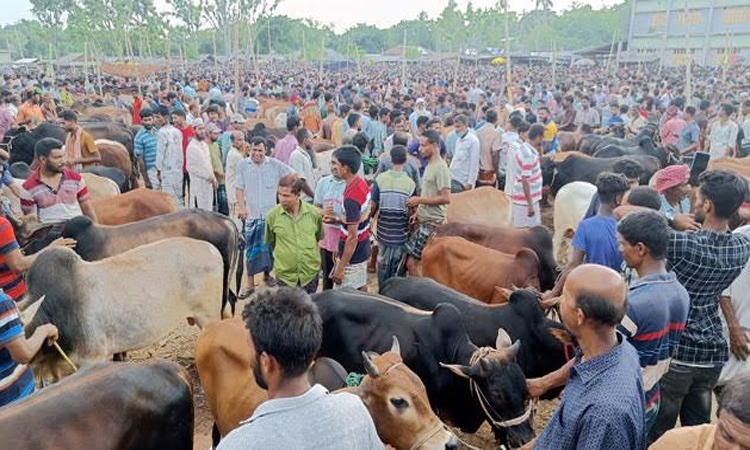News Flash

By Md Aynal Haque
RAJSHAHI, May 16, 2025 (BSS) - As a result of house-to-house cattle, goat and sheep rearing practices, the division has become home to surplus sacrificial animals, counting to around 1.67 lakh in the division compared to its demand.
In the region, sacrificial animals, primarily cattle, including calves, bulls, buffaloes, goats, and sheep, are commonly sacrificed for Eid-ul-Azha. Cattle and goat rearing is widespread in the region, resulting in a large supply of sacrificial animals.
According to the latest official data, there are 43.44 lakh sacrificial animals in the division consisting of eight districts this year.
In both rural and urban areas, poor and marginalised people, including women, have achieved tremendous successes in the sector, getting various assistance from the government and development partners.
Artificial insemination of cows is gaining popularity in the region following significant achievements in improving the breeding system.
Abdur Razzaque, 45, a farmer of Charghat upazila, has been fattening eight buffaloes for around seven months aimed at selling those in the upcoming sacrificial animal markets.
Due to the crossbreeding, the cows are giving milk 10 times more than the previous record, said Arafat Hossain, a successful dairy farmer in the city.
He said the producers have adopted new and improved practices and technologies in bull rearing and fattening, contributing to enhanced production and productivity.
The size of the market has expanded due to the growing active role of large and small-scale private companies.
Line agencies have become proactive towards supporting market actors, especially local service providers, by dint of their complementary roles in extension services.
In practice, the LSPs provide training, advice and input to the producers and earn, on average, Taka 5,500 per month. Routinely, they extend different modern technology to the producers by setting demonstration plots in the locality.
Besides, they organise community meetings with the help of private companies for building awareness about quality inputs.
Service contracts were established to provide regular necessary services and inputs to the farmers.
Dr Antim Kumar Sarker, divisional director of the Department of Livestock Services, told BSS that 302 hats consisting of 161 permanent and 141 makeshift ones were fixed for selling and purchasing sacrificial animals in the division.
All the hats will be supervised by medical teams. In each of the hats, hygiene management will be ensured. To this end, 213 veterinary medical teams were formed.
He said the Rajshahi district needs around four lakh animals to meet the demand for sacrifice, but it has around five and a half lakh animals eligible for the purpose.
Professor Jalal Uddin Sarder from the Department of Veterinary and Animal Sciences at Rajshahi University said that the venture promotes various value-addition activities of bull fattening, which reflect a sustainable economic change for the poorest people, particularly women.
Many of the rural families have been rearing and fattening bulls commercially and earning huge profits every year.
In the wake of the expansion of modern technology, the animal husbandry sector is flourishing in the areas boosting the local economy that reduces the import of sacrificial animals from India, he added.
Meanwhile, necessary preparations for the selling and buying of sacrificial animals are progressing in full swing in the local cattle markets.
Importance has been given to the selling and buying of animals through following social distancing and other safety guidelines on behalf of the local administration and the department of livestock.
The Border Guard Bangladesh (BGB) has intensified vigilance against cattle smuggling along the Rajshahi frontiers to avert any sort of intrusion of cattle heads from the neighbouring country.
The BGB has increased patrolling in the bordering area to prevent smuggling of cattle.
In the previous year, one hundred per percent domestic animals were sacrificed everywhere in the Rajshahi division.
Around 22.14 lakh animals, most of which are goats, were sacrificed in all eight districts under the Rajshahi division.
The people sacrificed 7.11 lakh cattle heads, 9,469 buffaloes, 12.31 lakh goats and 1.81 lakh lambs.